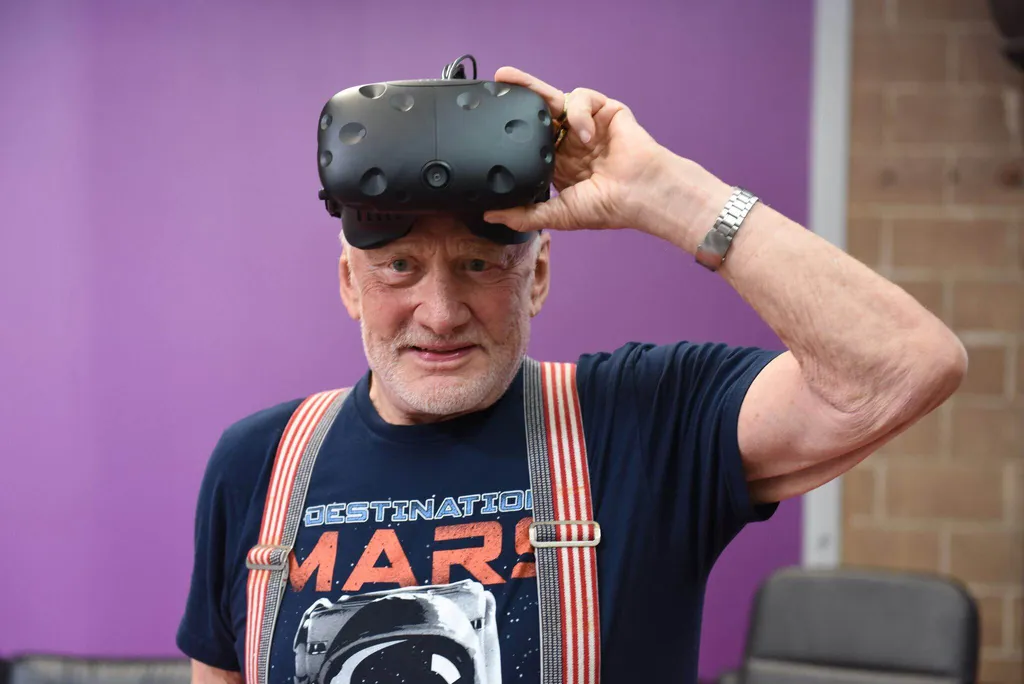Reality capture company 8i debuted its narrative experience Buzz Aldrin: Cycling Pathways To Mars and also hosted a panel where Aldrin chatted with a large group about his life and his goals with this collaboration. We weren’t able to attend the panel, but we were given an opportunity to speak with Aldrin in a more intimate setting with a few other journalists. The result was an intriguing journey through the mind of a man that certainly can’t be easily impressed, considering he’s viewed Earth from the face of the Moon.
To no one’s surprise, Aldrin pays a significant amount of attention to detail. As mentioned in our report on the hands-on with the Pathways experience, much of what Aldrin theorizes could easily go over your head, but I could grasp what he spoke of during the interview largely because I’d experienced Pathways. Much of the detail in the experience itself was placed at Aldrin’s instruction, something the 8i team said led to a pretty cool moment when Aldrin watched the narrative unfold himself. In life and in VR, people don’t usually look straight up without being instructed to. The action simply isn’t a natural thing, but Buzz immediately did so when he reached the part of Pathways that recreated his Moon landing. Why? Because that’s where he remembered seeing Earth. Details like that and even the amount of pods on the Cycler ship were painstakingly recreated by the 8i team to truly bring Aldrin’s vision to life.
When discussing the “big picture” VR creators seek to show in virtual spaces, Aldrin pointed out creators maybe focus too many assets on details that weren’t quite needed. With Pathways, he and 8i seem to have struck a solid balance. Visualization of data and concepts is something software developers constantly try to make more efficient and informative, from interactive graphs to living visual charts. We must “understand the conditions under which we’re going to use something and then design something to see how it works,” as Aldrin put it. Virtual platforms will hopefully continue to provide the space to do so.
When asked if he’d go to Mars himself, he responded: “I’m more valuable here than I ever think I could be there”. At 88 years old, virtual reality could be a means to not only solidify his legacy further (his hologram could greet people through mixed reality applications for hundreds of years), but it also allowed him to see his ideas for the future come to life.


























